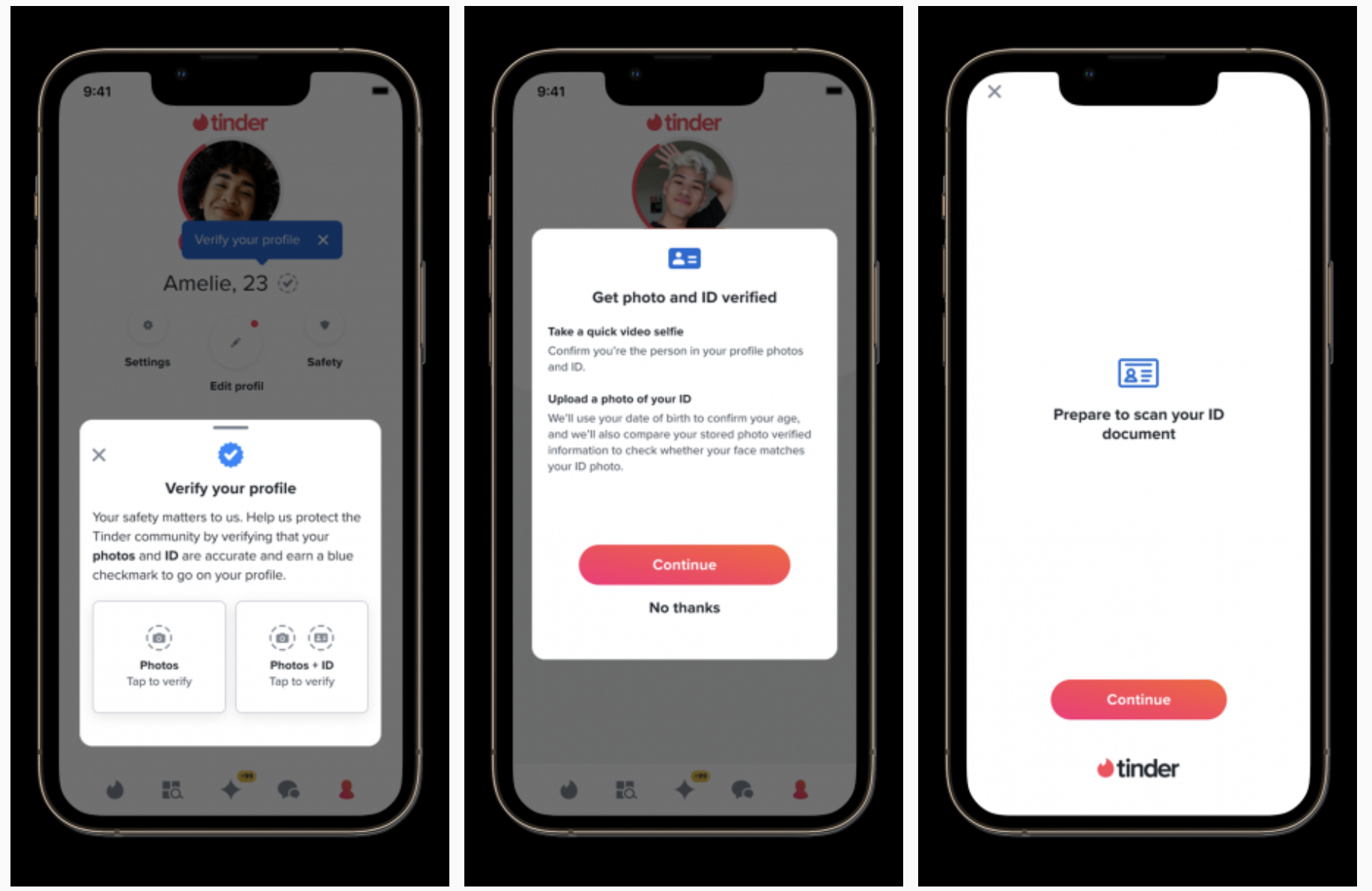Tinder has announced the expansion of its identity verification program to users in the U.S., U.K., Brazil, and Mexico. The program aims to confirm the authenticity of profiles on the dating app, providing users with a blue verified checkmark. Tinder plans to make this feature available in the U.S. and Mexico by summer, and in the U.K. and Brazil by spring.
The expansion of the feature comes as it is becoming harder to determine what is real and what is fake due to the rise of artificial intelligence. Additionally, the Federal Trade Commission reported that romance scams cost victims $1.3 billion in 2022, with the median reported loss being $4,400.
Tinder first piloted the identity verification program in Australia and New Zealand, where users who completed the ID Verification option saw a 67% increase in matches compared to those who were not verified.
To verify their identity on the app, users are required to provide a video selfie and a valid driver’s license or passport. A third-party vendor will then compare the face in the video selfie with the photo on the ID and the person’s profile photos. The process also verifies the date of birth on the ID.

Image Credits: Tinder
The ID Verification tool is different from Tinder’s Photo Verification feature, designed to prove that users are not bots or catfish. The app has now introduced different badges for verified users based on whether they have completed ID Verification, Photo Verification, or both.
By adding ID verification to the dating app, Tinder aims to help users feel more confident that they’re interacting with real people and not scammers or catfish. The company has been developing its identity verification tool for years and intends to make it globally available in the future to combat the rise of AI and romance scams.

